PRESTO PLANS
Sent straight to your inbox
CLICK HERE TO ACCESS
Sign up to receive 10 ready-to-use ELA resources your students will love!
10 FREE ELA RESOURCES
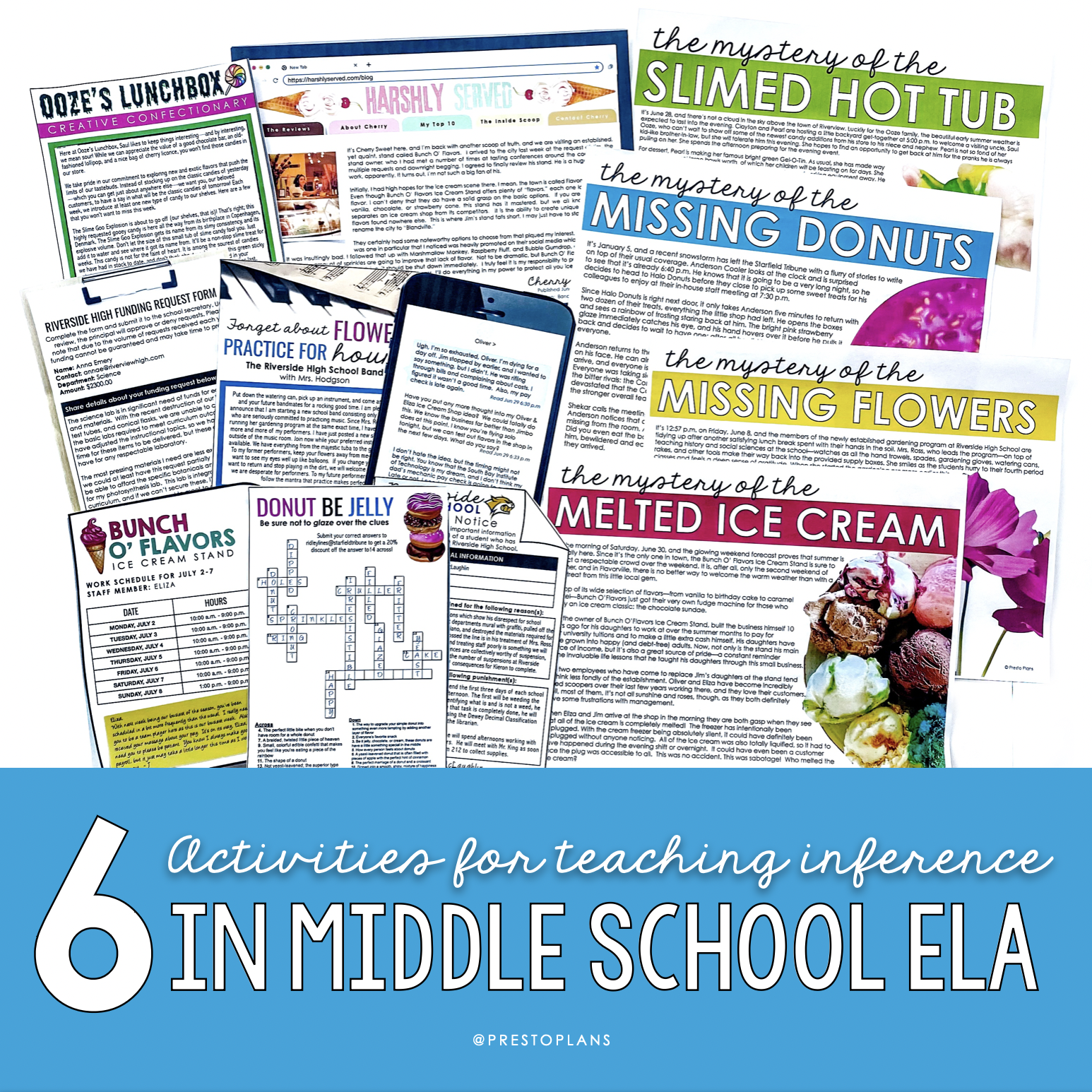
6 Activities for Teaching Inference in Middle School English
One of the challenges that I notice in the ELA classroom is that students can be very literal readers. This is why I believe activities for teaching inference in middle school are so important!
As adults, we make inferences automatically when we read! This means that we sometimes take inference skills for granted. But with middle schoolers in mind, it’s important to remember that the ability to make inferences is a learned skill – and an essential building block in the reading process! After all, the skill of applying background knowledge to make connections can be transferred to all subject areas.
Luckily, there are so many great activities for teaching inference in middle school ELA. (Your students might have so much fun that they forget they are learning!) Here are some of my favorites:
1. Social Media Inferences
What better way to hook a middle school reader than by infusing a bit of social media into your learning activities for teaching inference? From analyzing profiles to making sense of status updates, social media is full of opportunities to put inference skills into practice!
Inference Activity: Social Media
With this task, students can work alone or collaboratively (I like groups of three or four for this inference activity) to examine the social media profile of a fictional stranger. Looking at the information provided (words and images), students can then infer things about the person.
I like to have each group designate a recorder during this task. Using a provided graphic organizer, this person can jot down specific things from the profiles, as well as what they already know. Finally, each group can brainstorm various inferences about the person (such as their likes, dislikes, personality traits, hobbies, careers and families!).
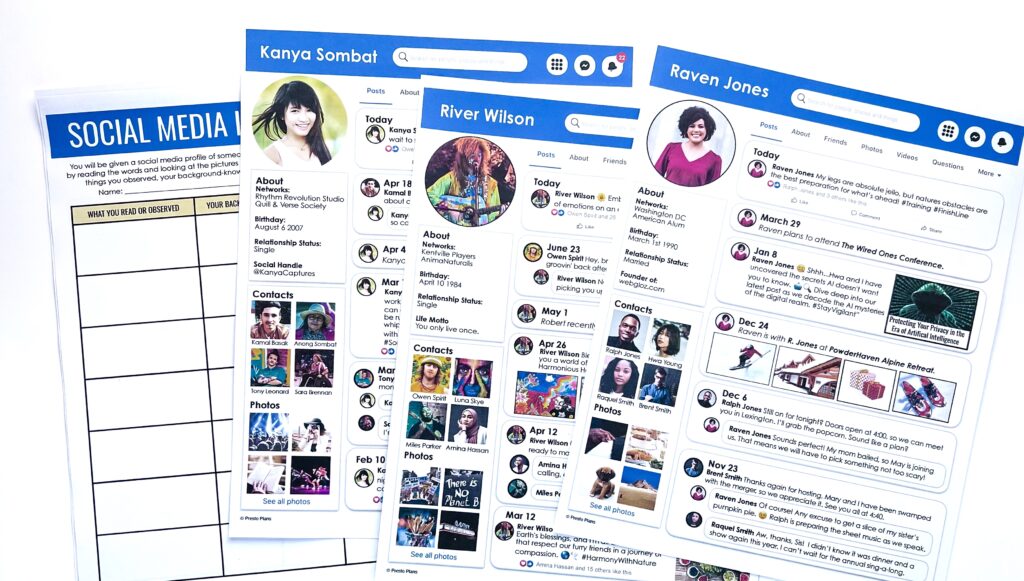
Inference Activity: Vaguebook
One of the reasons I find social media-themed activities so useful for teaching inference is that many posts are intentionally vague! Students already use their inference skills when they encounter cryptic posts or texts in real life (and try to figure out what that status update is really about). This learning task just makes this natural thinking process visible – to the student, and to you, too!
In the Vaguebook inference activity, I invite students to select a few samples from a pile of “status updates.” Working individually, in pairs, or even circulating in statements, they then need to infer three different reasons why a person would post an update like this. For example, a student might select a status like:
I can’t believe it’s only 4 days until my next chapter begins! I am so excited to see what the future holds, and my future looks bright.
Working with only this information, students might use their background knowledge to infer that this person is likely embarking on some sort of new journey in life since they mark this moment in life as a “new chapter.” Maybe this new chapter is starting college or university, for example!

2. Inferring Music
Just like social media, music gives you another way to incorporate high-interest examples as you practice inference skills with middle schoolers. I find that many of my students can “read between the lines” in popular song lyrics, supported by the emotion and tone of the vocals.
For this activity, I print out the lyrics to several songs where the meaning is not directly stated. From here, I ask my students to take a closer look at specific lyrics to determine the song’s meaning.
One example I love to use is the Taylor Swift song “Back to December.” Here, the students need to consider the emotional significance of this month and reflect on how the lyrics use the passing of seasons to show the timeline of a past relationship.
3. Text Message Inferences
Middle schoolers love texting! In this task, I provide students with a snapshot of texts between two people. After they have had the chance to review and discuss the text conversation, students can then reflect and respond to questions like:
- What do you you know about the two people texting?
- Where are the people who are texting?
- What can you infer about the personalities of these two people?
This task also provides an opportunity for middle schoolers to practice their elaboration and justification skills, as they can give evidence to support the answers to each question.
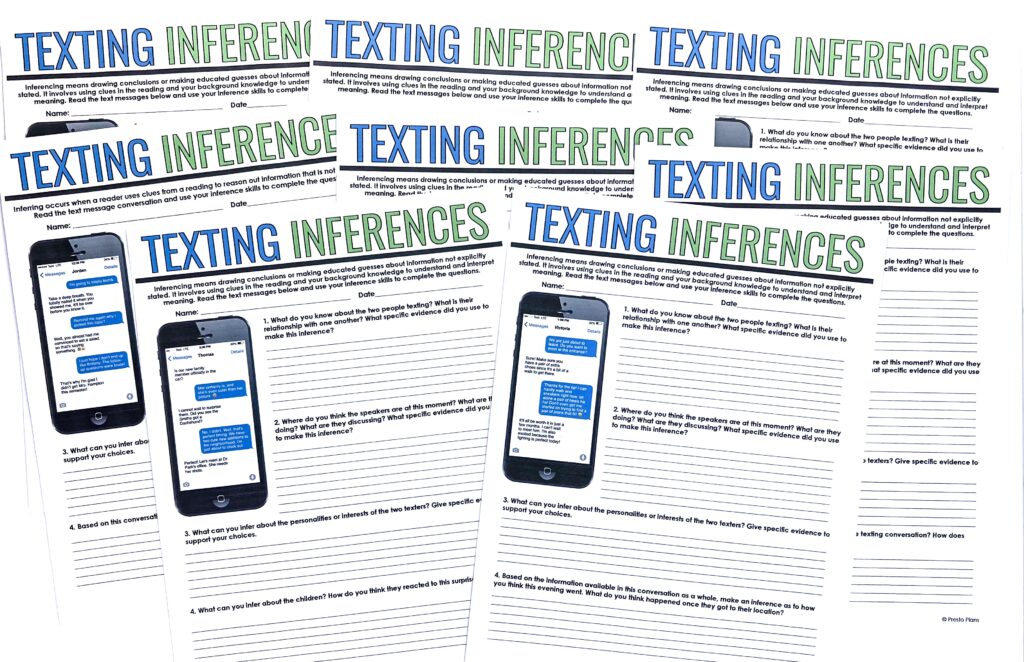
4. Missing Camera
For students who identify as visual learners, activities involving pictures can be a useful tool for teaching and reinforcing inference skills. In the Missing Camera task, I like to present an imaginary scenario to the class that looks a little like this:
While walking down the street, you happen to spot a camera on the ground. There is no identifying information, so you decide to scroll through the photos and look for clues about who the camera belongs to.
Students can then look at a selection of photos (you can even print them in color for added impact!) before making inferences about the person who may have dropped their camera!
5. Reading Mysteries
Reading mysteries are a fantastic way to incorporate inference activities into your teaching all year long! They are one of my favorite ways to help middle schoolers hone their literacy skills. Here’s how they work:
First, I introduce the mystery by dividing my students into groups and setting the scene. Together, we read a fictional scenario that sets out the mystery that needs to be solved, as well as a list of potential suspects. I like to use a slideshow to guide the lesson – it keeps everyone (including me!) on track!
Then, students need to comb through a variety of evidence to help solve the mystery! Depending on the mystery, this evidence can include a mix of text messages, emails, posters, invitations, websites, forms, social media or newspaper articles. As they discuss their findings, they can keep track of their thoughts with a graphic organizer. Once each group has developed a theory to solve the mystery, I wrap up the activity by revealing the answer and using the provided teacher slideshow to review all the evidence.
If you’re ready to try out a reading mystery with your class, you can try one out for free!
You can also access an entire year of reading mysteries with the Presto Plans Reading Mysteries Program!
6. Buried Ship Mystery
Another inference activity that I love sharing with middle schoolers is the Buried Ship Mystery. This task is a great way for students to develop their inference skills, as well as their ability to work as a team!
This task begins with students viewing a hand-drawn video, which was developed in collaboration with John Spencer. In the video, students learn that a buried ship was discovered in the heart of downtown San Fransisco. Where did it come from? How did it get there?
After students view the video, they can discuss their theories together, relying on the provided information and their own knowledge to draw inferences about the buried ship. I especially like using this inferencing activity at the beginning of the school year, returning from the winter or spring break, or any other time where I want to focus on teambuilding and collaboration.
There you go! I hope these suggestions give you some fresh ideas about activities for teaching inference skills to your middle schoolers. For more team-building activities to incorporate in your classroom, check out my post on 5 Ways to Build Classroom Community in Middle and High School!


Search the blog for what you are teaching
GIVEAWAYS
sent straight to your inbox!
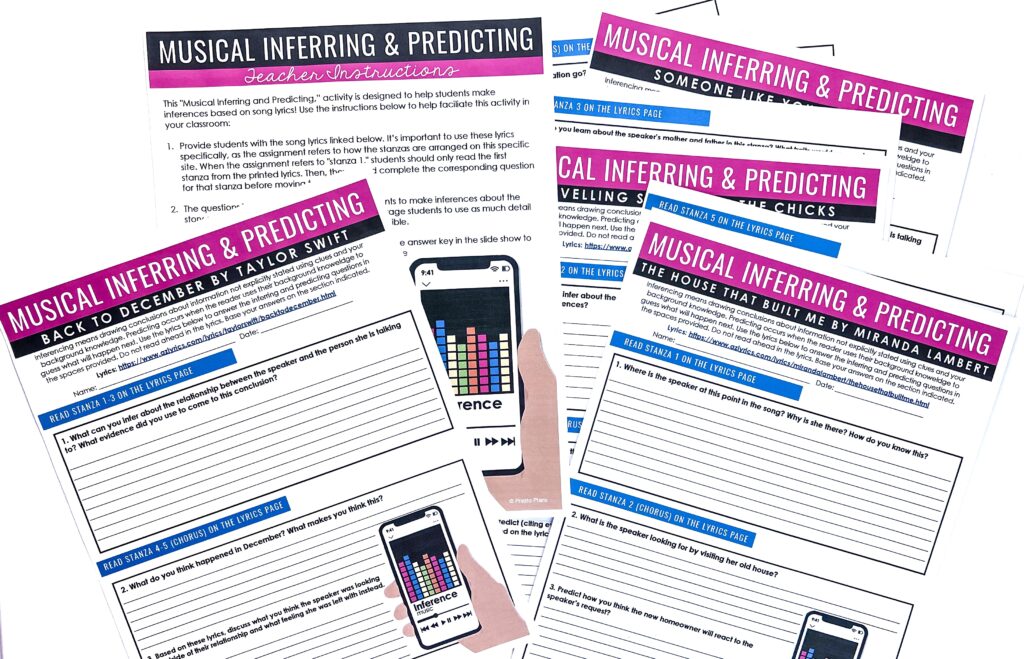

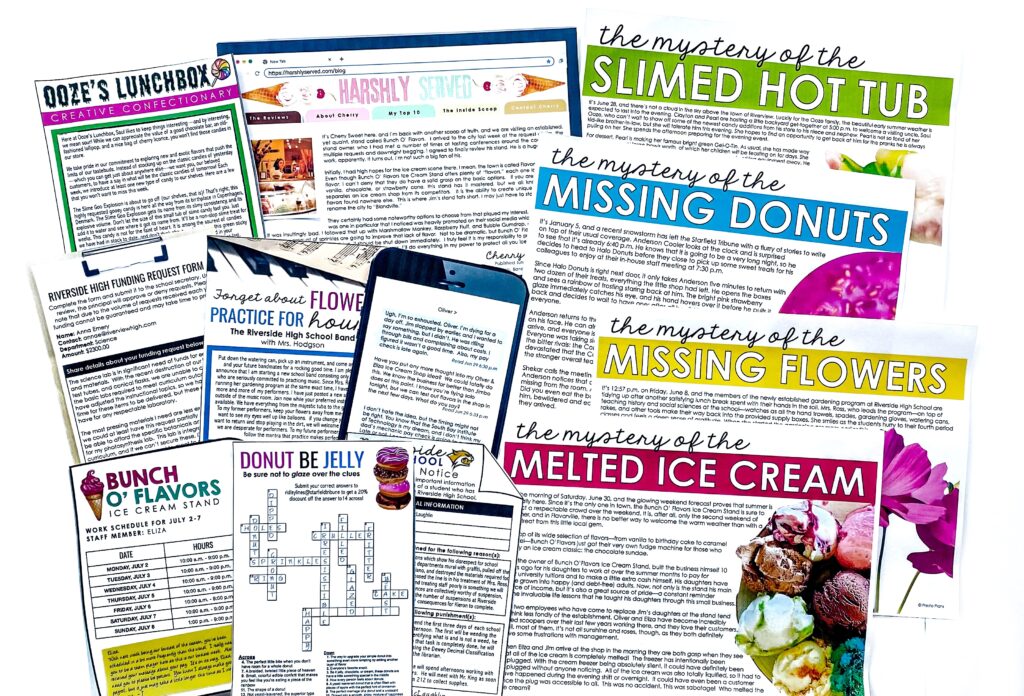
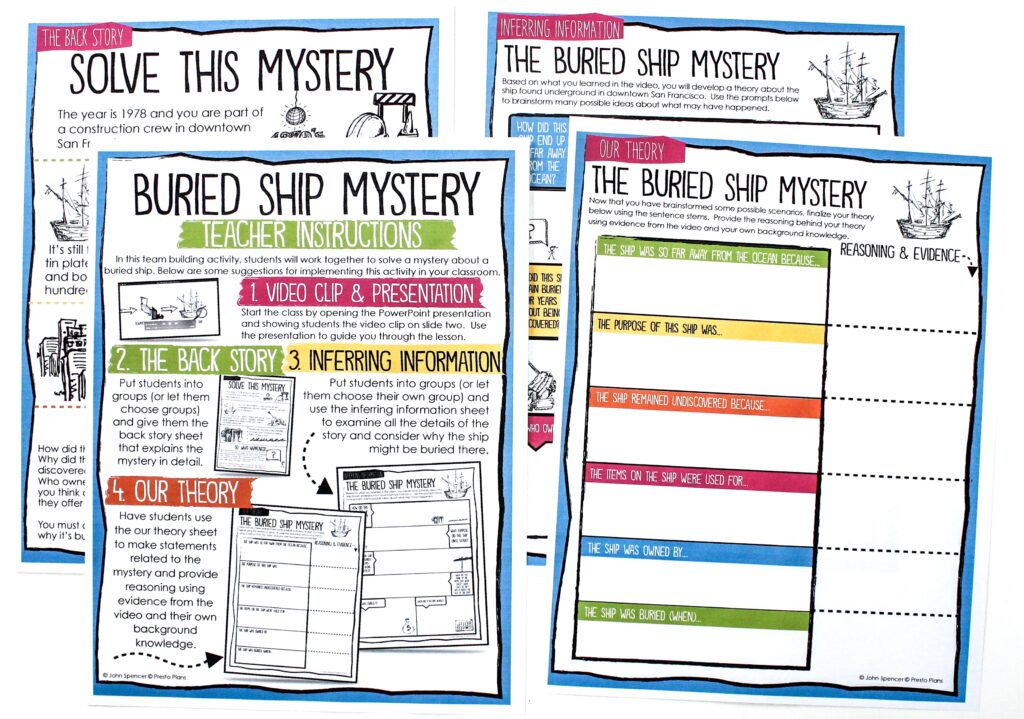


share this post